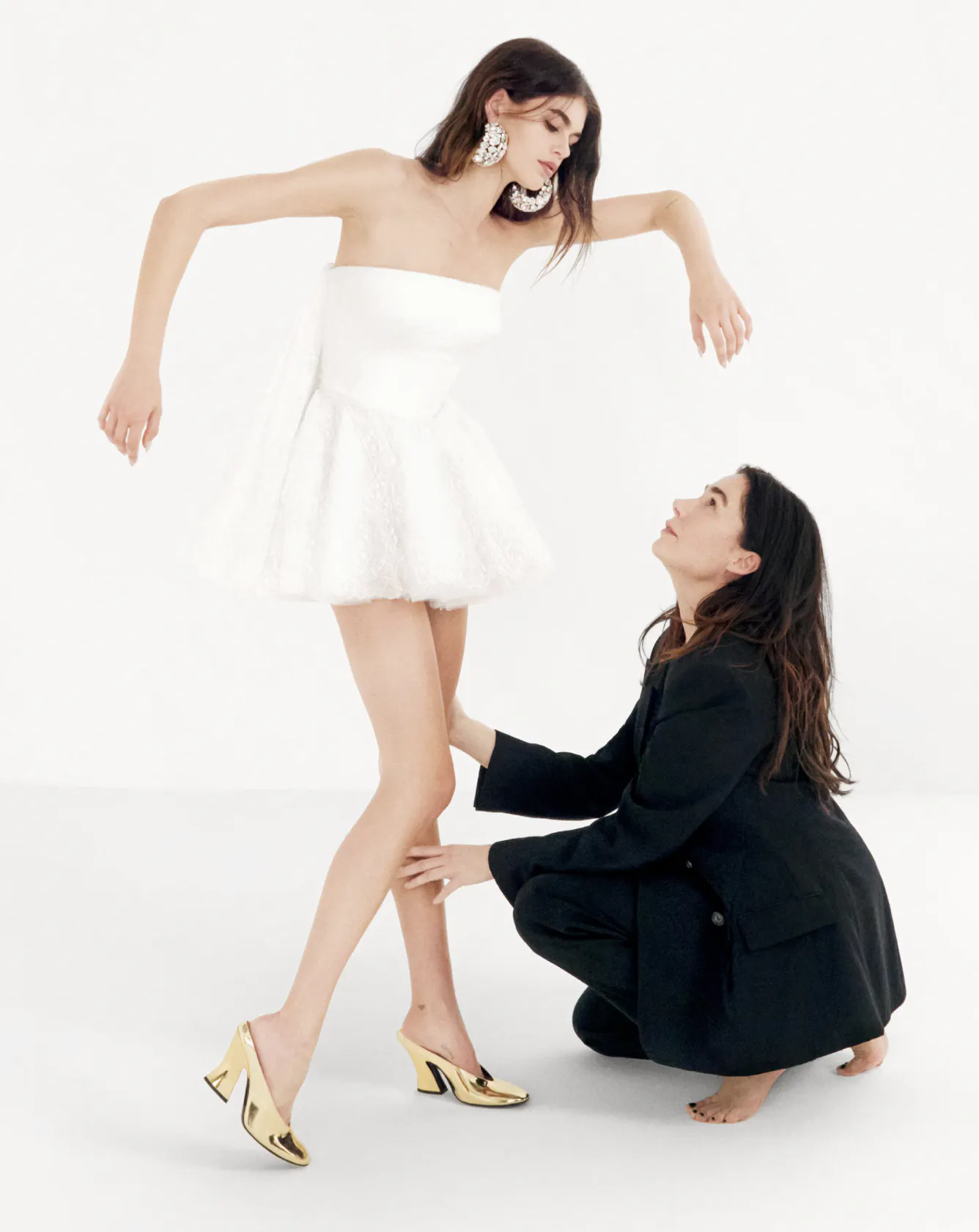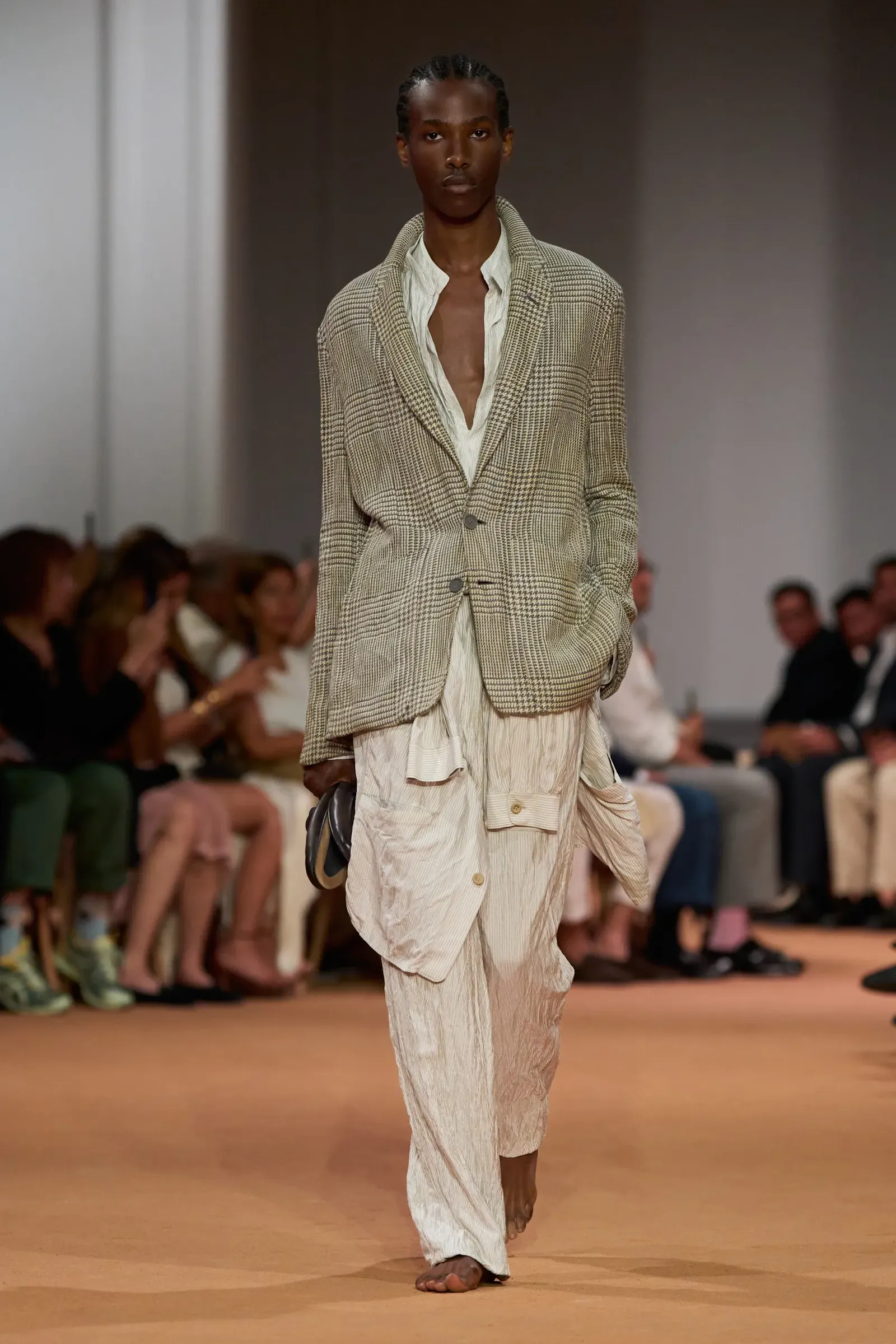S1 E20

WEEKLY NEWSLETTER FROM ANDREA BATILLA
HOW NOT TO BUILD A BRAND: GIVENCHY

Kaia Gerber, model and daughter of Cindy Crawford, poses against a white background wearing a short red dress with straps and black loafers. She moves as she listens to the voice of Halina Reijn, director of Babygirl, one of Nicole Kidman’s latest films.
Sarah Burton, creative director of Givenchy, describes the campaign like this:
“The idea behind my first campaign for Givenchy focuses on the friendship between a director and an actress. The documentary they filmed reflects all the playfulness and considered freedom of expression of two women having fun building a shared vision. It celebrates the female gaze and what fashion means to me.”
What exactly is “considered” about this project is hard to say, just as it’s unclear what Burton’s vision for the brand actually is. Most of all, I wonder how a millionaire model and a not-exactly-visionary director are supposed to celebrate the female gaze. What gaze, exactly?
If you browse the e-commerce section of the Givenchy website, you’ll find several pieces pulled straight from the new creative director’s debut show — all nice, all forgettable. Of course, it takes time to get traction and find a direction, but this obvious attempt to neutralize any kind of identity is downright unsettling.
Behind this new phase is CEO Alessandro Valenti, who’s held the position for about a year. He comes from a commercial background with strong retail experience, mostly built within the LVMH group. There are no official revenue figures for individual brands in the group, but Givenchy is estimated to bring in around €400 million annually, putting it near the bottom of the list.
That at least means there’s plenty of room for improvement — not to mention that Givenchy’s fragrances and makeup lines do have a clear identity, one that nobody seems to care about.
Givenchy has passed through the hands of Galliano, McQueen, Julien MacDonald, Riccardo Tisci, Clare Waight Keller and Matthew Williams. All we can really say about it, ontologically, is that it exists — it’s hard to say much more. Givenchy simply isn’t a brand. It’s a collection of disconnected experiences that have built, destroyed, rebuilt and destroyed wildly conflicting worlds, leaving no trace.
Tisci did the most significant work, revolutionizing menswear during his years at the helm, but once he left, LVMH rushed to wipe the slate clean.
You might think that behind these incoherent changes — emblematic of the times fashion is living through — lie complex rebranding strategies that are hard to grasp from the outside. But I fear the truth is simpler: a staggering amount of incompetence.
Because yes, that’s the real issue in fashion today. Not the Chinese market crisis, not wars, not right-wing governments, not “quiet luxury.” It’s management incompetence.
Think about it: in the last ten years, the fashion industry has grown at lightning speed, with relatively little resistance. In 2015, LVMH reported $39 billion in revenue. In 2024, it reported $95 billion. Just to give one example.
But this growth hasn’t been matched by a new generation of visionary managers — just a lineup of frightened foot soldiers who would rather avoid decisions than risk failure.
In Givenchy’s case, I don’t know how much of this is on Sarah Burton or Alessandro Valenti. Burton, at least, has proven she can lead an impossible brand like McQueen for a long time. Valenti, on the other hand, still has everything to prove.
The world is a mess right now, but you don’t win over uncertain consumers by staying neutral. It’s becoming more and more necessary to take a stand — just look at the success of Pieter Mulier at Alaïa, who is anything but neutral. That’s what fashion is. It’s something that lives inside a creatively courageous context. Otherwise, it’s just a product.
HOW TO BUILD A BRAND: ZEGNA

Ermenegildo Zegna founded the company that bears his name in 1910 in Trivero, in the province of Biella. Today, Zegna generates nearly €2 billion in revenue, also producing for Thom Browne and Tom Ford.
When creative director Alessandro Sartori presented the latest collection during a press preview ahead of the show in Dubai, he went deep into the idea of supply chain — essentially the same as “Made in Italy.”
Nearly the entire Zegna supply chain is not only controlled but owned by the company. Wool fabrics come from the Ermenegildo Zegna wool mill, cashmere and silks from Tessitura di Novara, jacquards and novelty fabrics from Bonotto, jerseys from Dondi Jersey, tweeds from Tessitura Ubertino, yarns from Biagioli Modesto, and knitwear from Luigi Fedeli e Figlio. Even the clothing manufacturing units — from formalwear to sportswear — are Zegna-owned.
The interesting part is that all these companies retain their individual identities and still work with other brands, managing to survive in an era when the Italian production chain is being systematically dismantled.
As Sartori explained, this setup allows for a creative process that starts from the yarn and ends with the finished garment, ensuring the highest possible quality.
On this rather unique foundation, Sartori has built a vision of menswear that is open, flexible and innovative — gently pushing traditional male consumers to embrace more contemporary, less rigid aesthetics, one step at a time.
Setting clear goals — as Sartori did when he became creative director in 2016 — gives structure to a project, even if those goals seem impossible. In this case, he and the Zegna family decided to pull the brand out of the anonymity of traditional menswear and create a new design language that just a few years ago would’ve been unimaginable.
Amazingly, Zegna’s traditional heritage wasn’t shattered or erased. Instead, it nourished the change — without alienating anyone. Case in point: 200 top clients booked made-to-measure appointments in the days following the show.
The end result, the visible surface of all this, was a runway presentation that, more than ever, delivered a soft, slow, gentle take on masculinity — a message that great clothing can be the product of long, complex, thoughtful work.
In a word, the recipe for building a brand.


